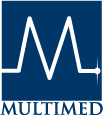A Nursing Evaluation of Unit Dose and Computerized Medication Administration Records
DOI:
https://doi.org/10.4212/cjhp.v45i4.2645Keywords:
computerized medication administration record, nursing attitudes, unit dose, attitude des infirmières, registre informatisé d'administration des médicaments, unidoseAbstract
ABSTRACT
A nursing evaluation of the unit dose system and a computerized medication administration record (MAR) was conducted to determine satisfaction with and perceptions of the effectiveness of these programs. A Nursing Evaluation Questionnaire was used to document nurses' attitudes towards the new programs. Of 228 questionnaires distributed on eleven nursing units, 152 were returned (response rate 66. 7%). Full-time registered nurses represented 73. 7% of the respondents, part-time 21 % and casual 5.3%.
Of the 152 respondents, 86.6% repotted at least "some" time savings preparing and administering medications with the unit dose system, with 57% of this group reporting "significant" time savings. Unit dose was considered a safer distribution system by 82% of the respondents. Almost all of the respondents (99.3%) would choose to work with the unit dose system
Of the 152 respondents, 86% reported the computerized MAR decreased time spent charting medications administered, with half of this group reporting "significant" time savings. The computerized MAR was considered a safer charting method by 74% of the respondents. All of the respondents (100%) would choose to work with the computerized MAR.
The evaluation indicated the unit dose system and computerized MAR were well accepted by nursing staff and were perceived to be working effectively.
RÉSUMÉ
On a demandé à des infirmières d'évaluer le système unidose et un registre informatisé de l'administration des médicaments afin de déterminer si elles jugent ces programmes satisfaisants et efficaces. Un questionnaire d'évaluation a servi à déterminer l'attitude des infirmières à l'égard des nouveaux programmes. Cent cinquante-deux (152) des 228 questionnaires distribués dans 11 unités de soins ont été retournés (taux de réponse: 66,7 %). Les répondantes sont des infirmières autorisées dont 73,7% travaillent à temps plein, 21 % à temps partiel et 5,3 % occasionnellement.
Quatre-vingt-six pour cent (86,6 %) des répondantes indiquent que le système unidose entraîne au moins une «certaine» économie de temps lors de la préparation et de l'administration des médicaments et, dans ce groupe, 57% signalent des économies de temps «importantes». Quatre-vingt-deux pour cent (82 %) des répondantes estiment que le système unidose est un système de distribution plus sûr. Pratiquement toutes (99,3 %) choisiraient de travailler avec ce système.
Quatre-vingt-six pour cent (86%) des répondantes déclarent que le registre informatisé permet de remplir plus rapidement les rapports, et la moitié de ce groupe indique une économie de temps «importante». Soixante-quatorze pour cent (74 %) des répondantes estiment que le registre informatisé d'administration des médicaments est un moyen plus sûr de préparer les rapports. Toutes les répondantes (100 %) choisiraient de travailler avec ce système.
L'étude indique que le système unidose et le registre informatisé d'administration des médicaments sont bien acceptés par le personnel infirmier et perçus comme des instruments de travail efficaces.
Downloads
Downloads
Published
Issue
Section
License
Copyright © Canadian Society of Healthcare-Systems Pharmacy.
After publication of a manuscript in the CJHP, the authors of the manuscript must obtain written permission from the CSHP (publications@cshp.ca) before reproducing any text, figures, tables, or illustrations from the work in future works of their own. If a submitted manuscript is declined for publication in the CJHP, all said rights shall revert to the authors. Please note that any forms (e.g., preprinted orders and patient intake forms) used by a specific hospital or other health care facility and included as illustrative material with a manuscript are exempt from this copyright transfer. The CJHP will require a letter from the hospital or health care facility granting permission to publish the document(s).









